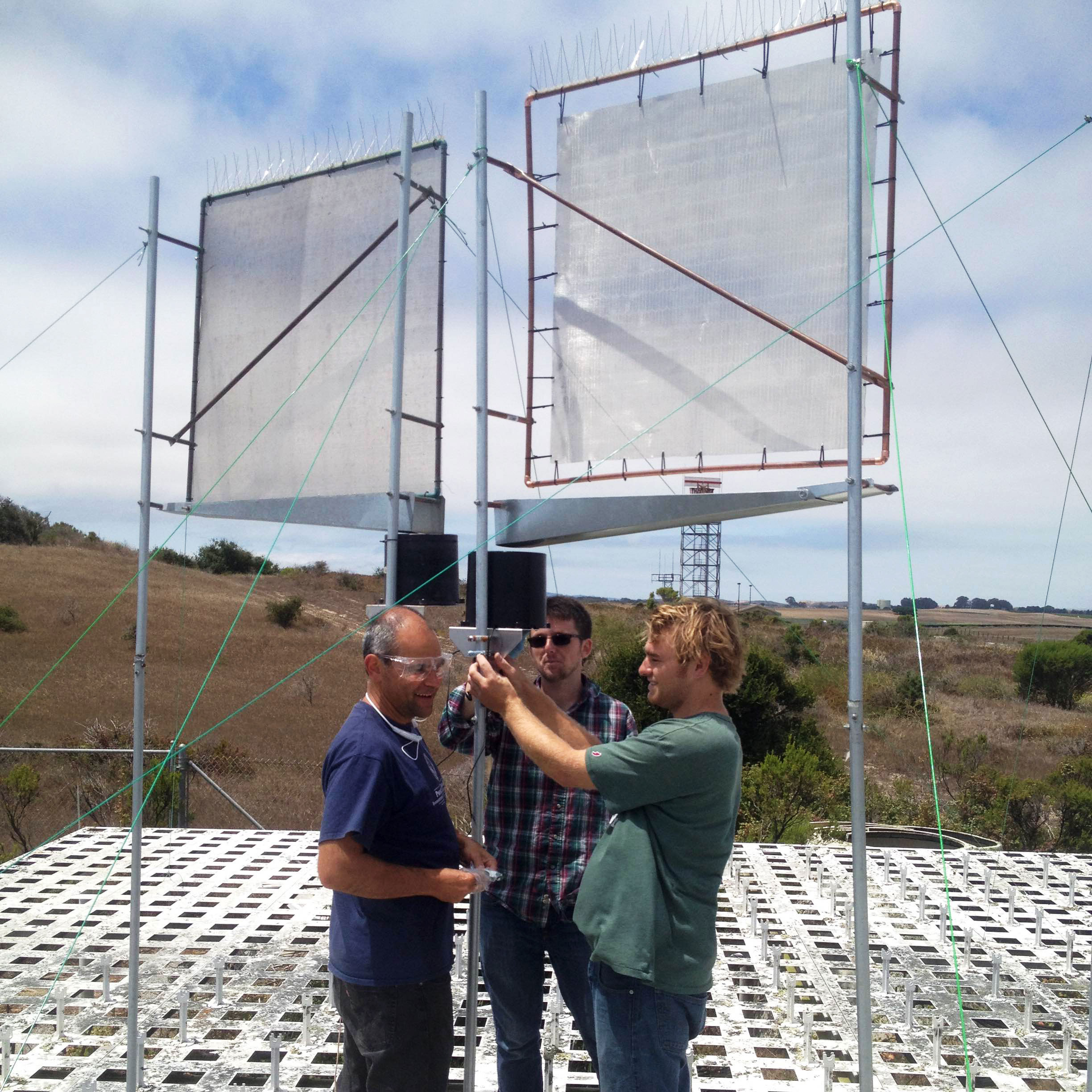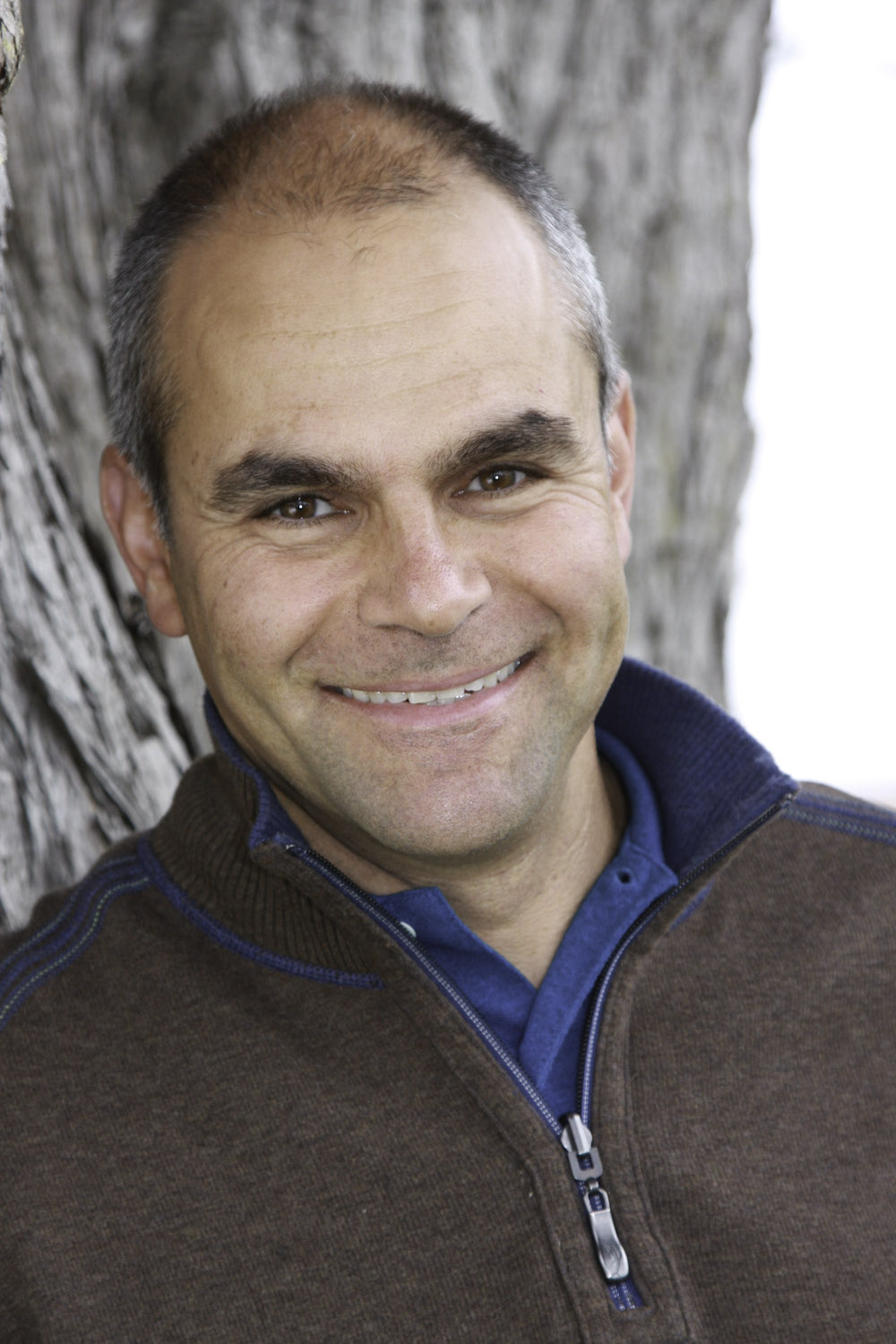CSUMB Magazine
Out of the Pacific Air

I have often felt the mystery and allure of a foggy afternoon or evening, having lived in Monterey for the past two decades. I am also painfully aware of the drought that our state faces, which is also chronic throughout the Southwestern U.S. At one point, in 2004, I put the two of them together and wondered if we can collect the moisture from fog. Details on that moment of realization can be heard in my 2011 TedX talk.
What followed was an opportunity to connect with Fogquest, a non-profit Canadian organization whose mission is to provide atmospheric sources of water where traditional water sources, such as wells, rivers, and pipelines, are unavailable. Their executive director, Dr. Robert Schemenauer, pointed me to the relevant publications and provided guidance as I initiated some preliminary efforts with several students, who worked with fog water collection to complete their Capstone requirements.
One of the key points Dr. Schemenauer emphasized was the need to utilize a standard collection instrument for fog water, such that results can be compared on an international basis. It was for this reason that all of my deployments involved a device known as a Standard Fog Collector (SFC).
The standard fog collector stands three meters tall (around nine feet) and consists of a square, 1.00 meter copper loop fitted tightly with a Raschel shade cloth mesh. The specified mesh is manufactured in Chile and represents the inter- national standard for comparison of fog data. The structure of the mesh allows wind laden with the tiny fog droplets to pass through it, yet it also has sufficient surface area to capture many of these fog droplets as they accrue into larger droplets and fall, due to their weight.

The copper square is supported by two vertical galvanized pipes and an angled trough underneath it captures the water that drips down from the mesh. The fog collector is supported by four guy wires that are either staked into the ground or tied to existing structures. A tipping bucket rain gauge records the water that comes out of the trough. Local meteorological station data lets us know when rain events occur so that we can remove those events from our records.
Amounts these systems have collected regionally vary from between nothing (when there is little or no fog) to as much as 36 liters from one square meter in a day that happened to be very foggy with high winds at an elevated location in the rugged coastal terrain of Big Sur. However, typical amounts we have collected from a square meter in a one-day period are generally somewhere between a fraction of a liter to three liters.
The first three standard fog collectors that we deployed were constructed in Chile and shipped here. Since then, as a result of some funding from CSUMB, NASA, and, most currently, the National Science Foundation, we have been building our own standard fog collectors, which have been deployed in the Marina area and in the Carmel Highlands since 2009. The National Science Foundation funds allowed us to expand our fog collection network to around a dozen sites from Big Sur all the way to Arcata (a span of over 400 kilometers).
Important data
There are several reasons why collection of fog water is important. One is that it provides an indication of the amount of fog water that is potentially available to regional ecosystems. There are many species of flora that are dependent upon fog water during the otherwise rather dry season in California.
These include, but are not limited to, coastal redwoods, various species of manzanita, and a variety of perennial grasses. Some animals, such as certain species of lizard, are also dependent upon both the moisture and the cooler temperatures that the fog provides. Better understanding of regional and statewide fog patterns can help us make better decisions on rangeland management issues.
Additionally, as many of us experience when standing under a Monterey pine on a foggy day, trees are excellent fog collectors and some of the fog water that they collect penetrates into the ground, providing moisture to the tree itself and to the understory. Absent these trees, very little of the fog accumulates and much of it ends up evaporating. Some efforts at re-foresting following fire or human activity require the water that would normally come from tree fog drip, but which no longer does. In these cases, some of which exist in formerly mined areas in Chile, use of large-scale fog collection is being considered to encourage re-growth of formerly forested areas.
Many uses
While the amounts of water that can be collected from fog are relatively modest compared to the typical amounts we demand for drinking, bathing, flushing toilets, watering lawns, and, of course, growing our food, the amounts obtainable from these systems may be practical for some remote villages which do not have access to water by more conventional means. Additionally, the water obtained from passive fog collecting systems may provide a means to keep wildlife from encroaching on human settlements in search of water.
Furthermore, the fog is a vector for many different types of contaminants, from sulfur, sodium and chloride, associated with the ocean, to organic and nitrogen compounds produced by industry and even to pesticides in agricultural areas. Recently, levels of mercury compounds have been found in some coastal fog that has generated significant research efforts which CSUMB has also been a part of. Results from these studies of mercury indicate that organic mercury compounds, which are thought to be formed by bacteria in the ocean column, are entering the fog, which may then be depositing them on the land, where they may tend to bio-accumulate in top predators. The original source of most of this mercury is thought to be from coal-fired power plants and, possibly mining operations, since the quantities of naturally occurring mercury are believed to be much lower. Studying the fog, then, may provide a better understanding of not only the natural cycles of water, but of the cycles of various toxic chemical compounds, including mercury-based organic compounds, hopefully leading to improved policy and management decisions on mercury emissions.
Despite the completion of the National Science Foundation project, we are hoping to maintain many of the passive collector sites to establish a long-term data set of fog water availability for the California coastal region.